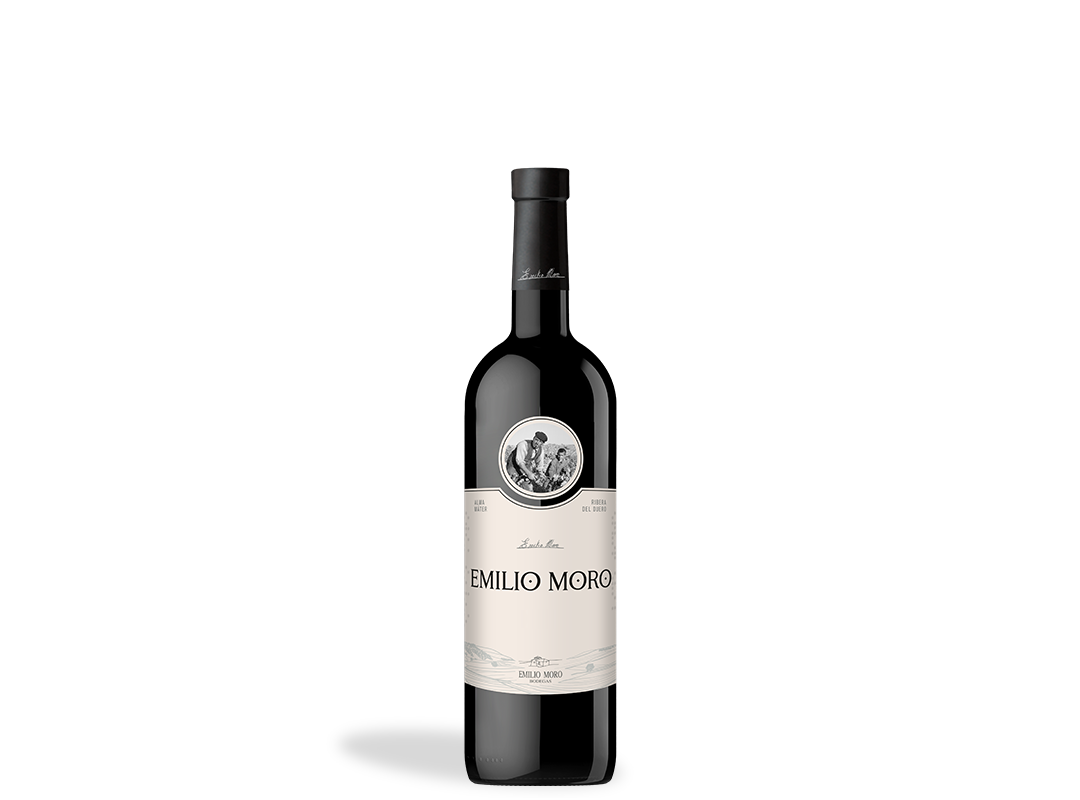- WHY DON’T WE INDICATE ON THE LABELS WHETHER THE WINE IS CRIANZA, RESERVA, GRAN RESERVA, ETC.?
Since 1998 we have renounced labelling our wines with the categories of crianza, reserva and gran reserva. Instead, we have decided to keep the wine in the barrel for the time necessary for our wines to acquire the desired character and to allow the full potential of each vintage to be tasted.
In this way, we understand that the personality of a ‘crianza’ must be based on the character of each wine, not on what the regulations dictate. At Bodegas Emilio Moro, we decide the personality of our wines through the internal tastings we carry out every week.
This has set us apart from other winemaking methods and has contributed to giving our wines a personality of their own.
- WHAT IS A TECHNICAL CORK?
For some time now we have been replacing the use of natural cork in some of our brands. This cork that we now use guarantees that there is no cork taste in our wines.
So-called technical stoppers; the only cork stopper that offers both perfect homogeneity from one bottle to the next, as well as different degrees of permeability and guarantees incomparable sensory neutrality.
Tested and approved by numerous international laboratories, technical stoppers are innovative stoppers that combine the tradition of a cork stopper with the mechanical and organoleptic safety of a technological stopper.
- WHY DOES THE CAP AND THE BOTTLE HAVE ‘LEES’ ON IT?
These precipitates that can sometimes be found in the bottle and adhering to the stopper, known as ‘lees’, are in fact the formation of bitartrate. This is a naturally occurring phenomenon and in no way interferes with the quality of the wine.
Precipitates are typical of wines that have not been subjected to chemical processes and that seek to respect the characteristics of their terroir (soil type, grape variety and climate conditions) as much as possible. They can also appear in wines that have been subjected to low temperatures, typical of the winter months or very cold seasons.
It is therefore a physical phenomenon that doesn’t alter the properties of the wine.
- WHAT DO THE PHOTOS ON THE BOTTLES OF EMILIO MORO WINES MEAN?
Bodegas Emilio Moro is a winery backed by the tradition of three generations dedicated to the winemaking process. We are very proud of our history, and that is why we wanted to reflect it in our bottles.
- Finca Resalso includes a picture of the third generation in 1964, in Pesquera de Duero.
- Emilio Moro includes a photo of the first two generations of the Moro family harvesting grapes (Emilio Sr. and Emilio Jr.). It was taken in 1938.
- Malleolus carries a photo of Emilio (Son) during the winemaking process in the family winery. The photo dates from 1972.
- The photo of Malleolus de Valderramiro shows Emilio Moro pruning in 1996.
- The image on Malleolus de Sanchomartin shows Emilio Moro in front of one of the winery’s first vintages, in 1985.
- IS ‘TINTO FINO’ THE SAME AS TEMPRANILLO?
Tinto Fino is the Tempranilllo variety adapted to the conditions of the Ribera del Duero with which we have grafted each and every one of our vines, with the aim of guaranteeing the quality of all our wines.
This clone produces grapes with certain particularities: The clusters are smaller and looser than those of Tempranillo, the grapes are also smaller and have ‘shoulders’ on the sides, which give them a unique shape.
In short, Tinto Fino is the maximum expression of Tempranillo in Ribera del Duero.
- WHY ARE ALL OUR WINES 100% TINTO FINO?
The terroir of Ribera del Duero is very particular: Its soils, the temperature fluctuations between day and night, the long, cold winters and very hot summers are not ideal for the development of any type of grape… But they are ideal for Tinto Fino, which is the autochthonous variety.
Although the Ribera del Duero Council allows four other varieties (Malbec, Garnacha tinta, Merlot, Carbernet Sauvignon and Albillo Blanco) at Emilio Moro we believe that Tempranillo stands out as a grape that has it all: power, elegance and character.
- DO WE PRODUCE ANY ORGANIC WINE? DO WE USE ARTIFICIAL IRRIGATION OR PESTICIDES?
At Emilio Moro we are driven by the utmost respect for our land. We do not use artificial irrigation or any kind of pesticides that could harm our surroundings or the environment.
In fact, we are producing a wine with organic certification and without allergens (without sulphites), because there is an increasing demand for this type of wine. This wine is the fruit of a three-year research project. Like all Emilio Moro red wines, it will be 100% Tempranillo. It is called La Felisa, and will be released soon.
- DO WE PRODUCE ANY WHITE WINE?
At Emilio Moro we have started to work on the production of our first white wine. It is a single varietal Godello. Our aim is to transfer the quality and uniqueness of our Ribera del Duero wines to a designation of origin with great potential: Bierzo.
We seek to produce an elegant, rich, full-bodied wine with ageing potential. It will see the light of day in the near future.
- WHY HAVE WE CHANGED OUR ALUMINIUM CAPSULES TO COMPLEX PLUS CAPSULES?
Indeed, our capsules have changed. Several consumers alerted us that they had problems opening bottles with aluminium capsules, which is the material we used before. Aluminium is a very sharp material and any carelessness in opening them could result in injury. Therefore, we decided to replace this material with a less sharp but equally efficient material: complex plus.














